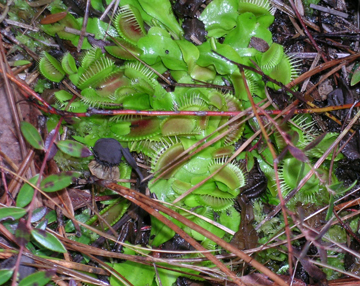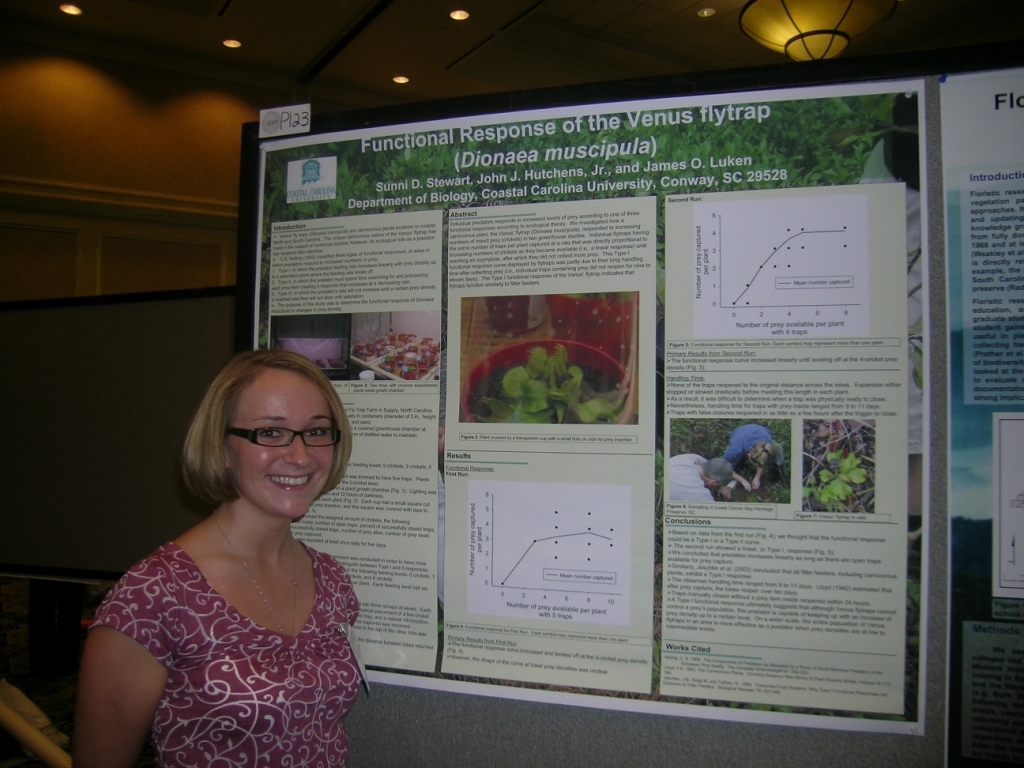 Venus flytraps growing in Lewis Ocean Bay Heritage Preserve.
Venus flytraps growing in Lewis Ocean Bay Heritage Preserve.
Venus flytraps (Dionaea muscipula) are native to a relatively small region surrounding Wilmington, NC, which includes areas near Coastal Carolina University. Although this plant has received considerable attention due to its carnivorous habits, its ecology in its native habitat has been poorly studied. I am collaborating with Dr. Jim Luken (CCU Department of Biology) and recent CCU undergraduates Sunni Stewart and Scott Tomko to investigate prey capture by flytraps. We are examining how plant size and surrounding vegetation influence prey capture success and prey composition.
An overview of flytrap conservation and some of our research can be found in the February 2010 issue of Smithsonian.
We published our results for the effects of plant size on prey capture in Botany (Hutchens and Luken, 2009; 87:1007-1010). Sampling prey capture over three seasons showed little support for Charles Darwin's hypothesis in 1875 that Venus flytraps select for large prey. Instead, we found that trapping success was similar across trap size classes and that trap size explained a small but significant amount of the variation in prey length. Although prey composition in the largest size class differed from that in the two smaller size classes owing to the presence of a few taxa that were seldom encountered, prey composition was still dominated by spiders and ants in all size classes.
Sunni Stewart studied the functional response of Venus flytraps for her undergraduate honor's thesis. She found flytraps have a Type I functional response and presented her work at the 2008 Association of Southeastern Biologists meeting in Greenville, SC (click here to view her poster).
